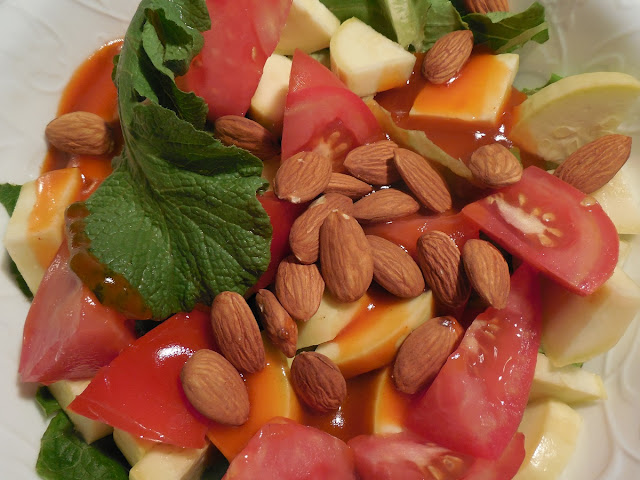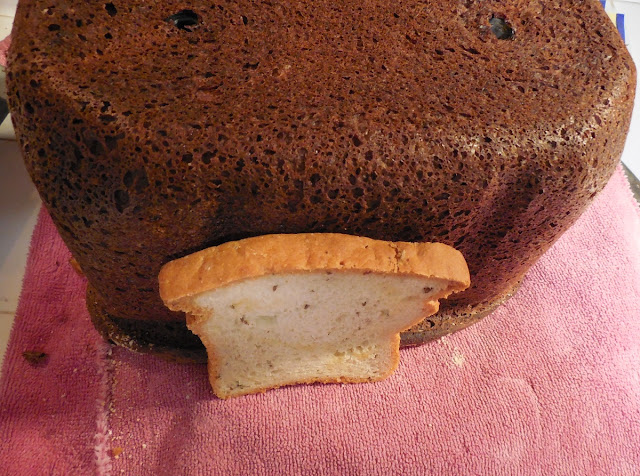Flora Gardening - Bringing Beans Back to Our Lives (Safely)
I love beans! But they're FODMAPS and usually hurt me. When mixed with the right umami flavors and spices, beans can be divine and satisfying. I've been missing them. When suddenly introduced into a diet, beans can cause extreme pain and agony in some people with gut problems. Even healthy people experience gas with beans, but those of us with a gut issue often find beans difficult or impossible to eat. I'd given up on beans and it wasn't until I abandoned gluten that my body felt strong enough to give beans a try again. I ate an entire 16-ounce can of beans yesterday (no pain) and I'll show you how I got there.
Before you start, make sure you haven't had a "glutened" reaction in at least a week, and don't start this unless you've been feeling well for at least a week. If you can tolerate probiotics, start with eating a bit of probiotic yogurt, sauerkraut, or non-dairy kefir, and add the probiotics when mentioned below. Otherwise, you may need to go slower even than my plan (which is already really slow). Sauerkraut varieties are helpful probiotics for beans because of Lactobacillus plantarum which helps break down vegetable matter. It's not always found in yogurt, so read labels.Step 1: Start with hummus, either homemade or store bought.
There are several excellent brands which are gluten free. My current favorite brand is Hope but if you're sensitive to spices, you're better off with a more ordinary one, or making it yourself. If you have allergies to the ingredients, swap them for any one bean and one seed that you like (black beans and pepitas, ahem, pumpkin seeds for instance).
How long to do this step: 2 weeks to 1 month - Keep up the *daily* snack of hummus either on toast or with chips that work for you. Meanwhile, eat a bit of probiotic every time you eat some bean spread. Start small, maybe a few chips with dip today, maybe 1/3 container by Saturday, a a full container (over the course of a day) by two week's time. We're establishing a steady supply of food for the probiotics, so whatever beans you use in this step, make it one you love and will continue to provide. Think of it as gardening. This is the hardest step and you can feel free to stay on this for a month or more before the next step.
It's really essential for this entire program to eat some beans every day. If you get really busy, just go back to Step 1 and use store bought hummus if you tolerate that. Or make a bunch of it once a week and it will last a week with enough lemon juice or vinegar in it. Don't use living vinegar ("with the mother") or sauerkraut juice if you want it to last more than a day or two. It's not unsafe, but the flavors might be off.Step 2: Make succotash.
The recipe for succotash can be flexible. Technically it must contain corn to be succotash, but homminy is not unheard of, and if you must avoid corn completely, then cubed parsnips or carrots can replace it. My advice is, choose a squash that you like and make it part of the succotash. My three items for the recipe are corn, pod-beans and squash. But other combinations work too such as sweet potatoes, and a bag of frozen peas and carrots. The goal is to provide a variety of carbohydrates to encourage some differentiation in the "first crop" of probiotics.
How long to do this step: 2-4 weeks - Make succotash twice in the next two weeks and eat leftovers over several days, alternating with hummus. You don't need to eat both in one day, but eat one or the other each day. If you get glutened at any point, go back to step 1, and defer any changes for 1-2 weeks. At this point you can consider adding any probiotics that used to be good for you but became troublesome later. At one point I was down to only Dannon's proprietary bifidus strain being ok for me, and now I am fine with Stonyfield yogurt again. Variety is good. More than you ever wanted to know about the gut flora can be found here.
I've always loved salads, but if you have trouble with too much fiber, this is the time to test salads again, after a few days of succotash, see if you can have a small side salad. It might be too soon yet. At this point, a low-FODMAP salad is safer, so lettuce, matchstick carrots and a safe dressing can be enough. If you've been able to eat sauerkraut, then this may be more successful earlier because the type of probiotics in that soften and release the liquids inside the tough cell walls of plants, allowing for better absorption of nutrition and less gas.Step 3: Make a lentil soup or alternatives.
Even if you don't like soup, the water with the fiber and prebiotic is important. So if you can't stand soup, then make something thicker like Indian dal (more on dal later) and be sure to drink a full glass of water with the meal. I'm lucky I like soup because my functional gut issues don't really mix water and food well. So if you have motility issues, stick to soups.
Lentils are relatively lower in FODMAPS than other beans. Good alternatives are mung beans, black beans and dal. If you have problems with fiber, then head out to an Indian specialty market and seek out the varieties of dal. This is beans with the skins removed and it can ease your way back to healthy beans by reducing fiber while allowing the bean nutrients to help re-balance flora. When you're doing well and not having issues with dal, you can start to combine 1/3 beans + 2/3 dal, and on up until the full fiber bean is used once more. Just take it easy and slow.
- This lentil soup recipe is good for reducing troublesome oligosaccharides and anti-nutrients in lentil soup because she separately cooks the beans and rinses them before adding to the soup.
- Kashmiri Dal is less spicy than some Indian dishes and may be easier on the tummy than the better known Dal Tadka. Technically red pepper flakes wouldn't be added to a Kashmiri dish, since strong spices are not traditional for the area, so feel free to leave them out.
- Mung bean soup is a delicious alternative to Lentils. If you have trouble with too much fiber, you can find Moong Dal in an Indian specialty market which is mung beans with the fibrous jacket removed. Moong Dal looks creamy white, not green. Avoid the bulk aisle and order this online for maximum gluten free safety.
- Black bean soup is another alternative, sometimes less troublesome than the beans in step 4 but I'm not aware of a dal version for it. Black gram dal might be a good jacket-less dal to mix with it at first.
This is where I am now. Getting this far is far enough, but if you are still doing fine, a world of variety awaits in the next step. I'm going to wait a full month before trying something from the next group and I advise you to do so as well. Once the flora changes, there is a lot of immune adjustment that has to take place and that doesn't happen fast. If Celiac healing has taught us anything, it's that it takes a very long time for the body to make an immune adjustment, 6-12 months. So don't rush to make changes. Let it take a year if need be. Keep testing once a month and allow that maybe some of the next step's beans aren't going to make it into your diet. That's OK.Step 4: Start with split peas, kidney beans, white/navy/canneloni beans or adzuki beans, and move on to whichever beans suit you. After 3 months of the above, test one of these high fiber beans as an addition to a food you already eat, such as adding a small amount to your lentil soup, or a some cooked beans to a salad.
Although white and navy beans are not known to have high insoluble fiber, compared to kidney beans, the amount of soluble fiber is very high, so they are in Step 4. If you disagree with that, and your body is OK with soluble fiber, feel free to test them first or even to move them to step 3. Everyone's starting point is different. Once you have advanced this far, some delicious bean salads await you, as well as a lot of fun colorful cooking ideas like using cranberry beans. Those would look great in a gluten free minestrone soup. I'm really looking forward to a split pea soup with ham which I haven't enjoyed in years.
But it doesn't stop there! Once you've conquered beans and they are digestible again (thank you, beloved gut flora) here are some more ideas for beany fearlessness:
- http://bethicad.blogspot.com/2015/10/whole-urad-dal-dosa-whole-black-gram.html - Delicious gluten free flatbreads made with bean flours in a traditional Indian recipe, there are many recipes like this.
- http://www.geniuskitchen.com/recipe/gluten-free-high-protein-bean-bread-382114 - Bean breads such as this one can be an economical way to stretch the "bread mix" budget while adding more protein to it. There's some evidence that bean flours or at least their proteins are the future of GF bread recipes.
- https://www.buzzfeed.com/deenashanker/toot-toot?utm_term=.bsz4XKNnd#.ipYekEQV1 Lots more ideas here.
Further reading:
5 Benefits of Beans and 5 Risks from Reader's Digest
https://www.rd.com/health/conditions/health-benefits-of-beans/
Health Benefits of Beans from Huffington Post
https://www.huffingtonpost.com/2012/08/16/beans-health-benefits_n_1792504.html
How to add beans to a gluten free diet from Beyond Celiac
https://www.beyondceliac.org/celiac-disease-news/Celiac-Disease-in-the-News-article/1395/postid--14896/





